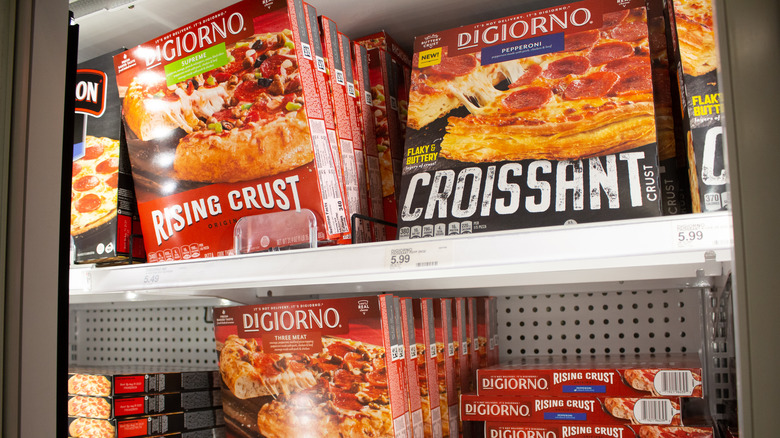How Refrigerated Pizza Evolved Into Frozen Pizza
Americans love frozen pizza. According to a 2020 report from Food Business News, more than 40% of Americans eat pizza at least once a week, and there are more than 95,000 pizza outlets in the United States. In 2019, the pizza market reached $154.8 billion in global sales, with the United States accounting for $46.3 billion of that market, Food Business News notes. But did you know that frozen pizza's precursor isn't actually the fresh stuff?
While the first pizza was created centuries ago in Naples (or, if you want to get technical, by the Greeks and Romans even earlier), there was another pizza option between fresh pizza and frozen pizza: the refrigerated pizza.
As early as 1950, per CNBC, refrigerated, ready-to-cook pizzas were popular on the East Coast. Pizzerias would offer refrigerated pizzas that were topped and ready to cook. You could buy one of these refrigerated pizzas for as little as $0.49, and they were hugely popular for their accessibility and convenience.
How pre-made pizzas went from the fridge to the freezer
So, how did pre-made pizza go from the fridge to the freezer? The success of the refrigerated pizza was incontestable. Naturally, pizza makers wanted to take what customers loved about the refrigerated pizza — quality and convenience — and make it last even longer?
It didn't take too long for pizzerias to jump on the idea. In 1950, a patent was filed for a frozen pizza-making method, per the United States Patent Office. That same decade, Celentano Brothers began marketing its frozen pizzas nationally. Today, the longest-standing frozen pizza brand is Totino's, named after a Minneapolis-located pizzeria that founded its own frozen pizza plant, per Innovation & Technology. In 1975, Pillsbury purchased Totino's for $20 million, the outlet notes.
However, while the pizza of these decades was popular, even on a national scale, the pies weren't nearly as successful as today's offerings. Consumers complained about subpar crust, primarily, Innovation & Technology noted. But, according to The New York Times, 1995 was the year that changed frozen pizza for good, as Kraft debuted its DiGiorno brand. The new option featured chemically stable dough for better crust and enhanced packaging. The result? Annual frozen pizza sales went from $500 million in 1995 to $2.2 billion in 1997, per the Times.

